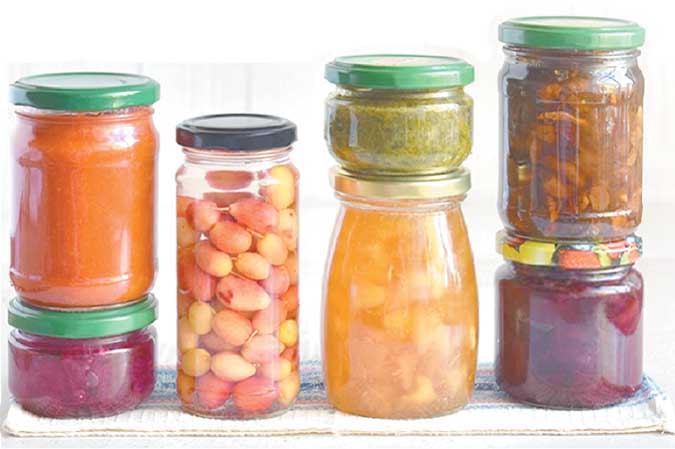A BOTTLE of jam is humanity’s triumph against time. As nature takes its toll on fresh produce, we manage to steal back a little of the food in our home by preserving it and thus, saving it for another day.
The coronavirus disease 2019 (COVID-19) pandemic has made preserving food necessary — on a smaller scale, personal precautions against the virus have prevented us from running to the store and back; but on a larger scale, supply chains that bring fresh produce to stores have been disrupted by the economic and human costs wrought by the pandemic.
Last week, chef and educator Waya Araos-Wijangco appeared on a Zoom meeting with Tastesetters to talk about food preservation techniques. Tastesetters is an initiative by Sysu International, Inc. (which brings brands like Lee Kum Kee, Clara Ole, La Española, Tabasco, among many others, to the Philippines) to reach out to food industry members with workshops and innovations.
Ms. Araos-Wijangco, who has relocated to Baguio since the pandemic, whipped up a familiar Baguio product: strawberry jam. Of course, the various vendors (nuns included) of Baguio each already have their own version, so Ms. Araos-Wijangco put in a twist of her own: Tabasco Habanero sauce.
“It’ll give our jam a little spicy background and a nice surprise,” she said. Added to these were orange juice and apricot jam. The orange juice serves to add pectin, a component in fruit that sets jams and makes them thick. The apricot jam does the same (it already being a jam) but adds a new flavor as well. “I really wanted to do something with… strawberries that were past their prime,” she said. “Kailangan matuto tayong magtipid (We need to learn how to save).”
She cut away the overripe bits from the strawberries and roughly chopped up the rest for some texture. She said that when one buys strawberries, especially in restaurants, there will be some that won’t get used: sometimes, for reasons of aesthetics, as the journey from farm to table has made them no longer pretty enough for salads and desserts. “It’s still pretty good, it just doesn’t look good as new. We in the industry, we need to have recipes… where we can put things like that so they don’t get thrown away,” she said in a mix of English and Tagalog.
The jam was reduced after a while, and was ready for bottling — she instructs to make sure the jars are sterilized — and then sealed. To close the seal, she placed the jars in boiling water for about 10 minutes, adding that one should make sure that no food is left on the rim, to ensure a clean and safe seal.
She moved on to making a savory tomato jam with dehydrated — practically sun-dried — tomatoes (which she showed as a process of slicing, lightly seasoning, and placing in a dehydrator at 80 degrees for about three to four hours). “For me, sun-dried tomatoes taste like summer. You’re able to preserve it just by dehydrating it,” she said. She added too that the process concentrates the flavor, and removes the liquid that attracts mold.
While the dried tomatoes can on their own have already been preserved, she takes it a step further by making them into a jam. She used water (chicken stock optional), sherry vinegar, a bit of brown sugar, and chili oil (just for the kick). After reducing, this was transferred to a jar, following the same safety steps as in the strawberry jam.
Ms. Araos-Wijangco told viewers on Zoom how she got into food preservation.
“At the start of the pandemic, we were doing a lot of frontline feeding,” she said (Read it here: https://www.bworldonline.com/feeding-the-frontliners-we-do-what-we-can-and-we-do-what-we-must/). Their initiative attracted a lot of attention and thus, donations, but there was simply too much food all the time. “I always tell my staff: we have to honor the intentions of the donor… we got so many vegetables. We cannot process them all in one day.”
Since there was a need to feed medical frontliners every day, she decided that the food donations’ shelf-lives had to be extended, which was why she turned to pickling and preserving. “That’s how I got deep into preservation — trying to honor the intent of the donors,” she said. In relocating to Baguio, nearer to the farms, she thus became closer to the people who grew food. “Now you also honor the work of the farmers. You don’t let their food go to waste.”
“Especially in this pandemic,” she said in a mixture of Tagalog and English. “It’s getting harder to get good produce, so it’s really important that you’re able to extend the shelf life of whatever it is you get.”
To stay updated on upcoming Tastesetters webinars, sign up to their website: https://tastesetters.ph/. — JL Garcia

